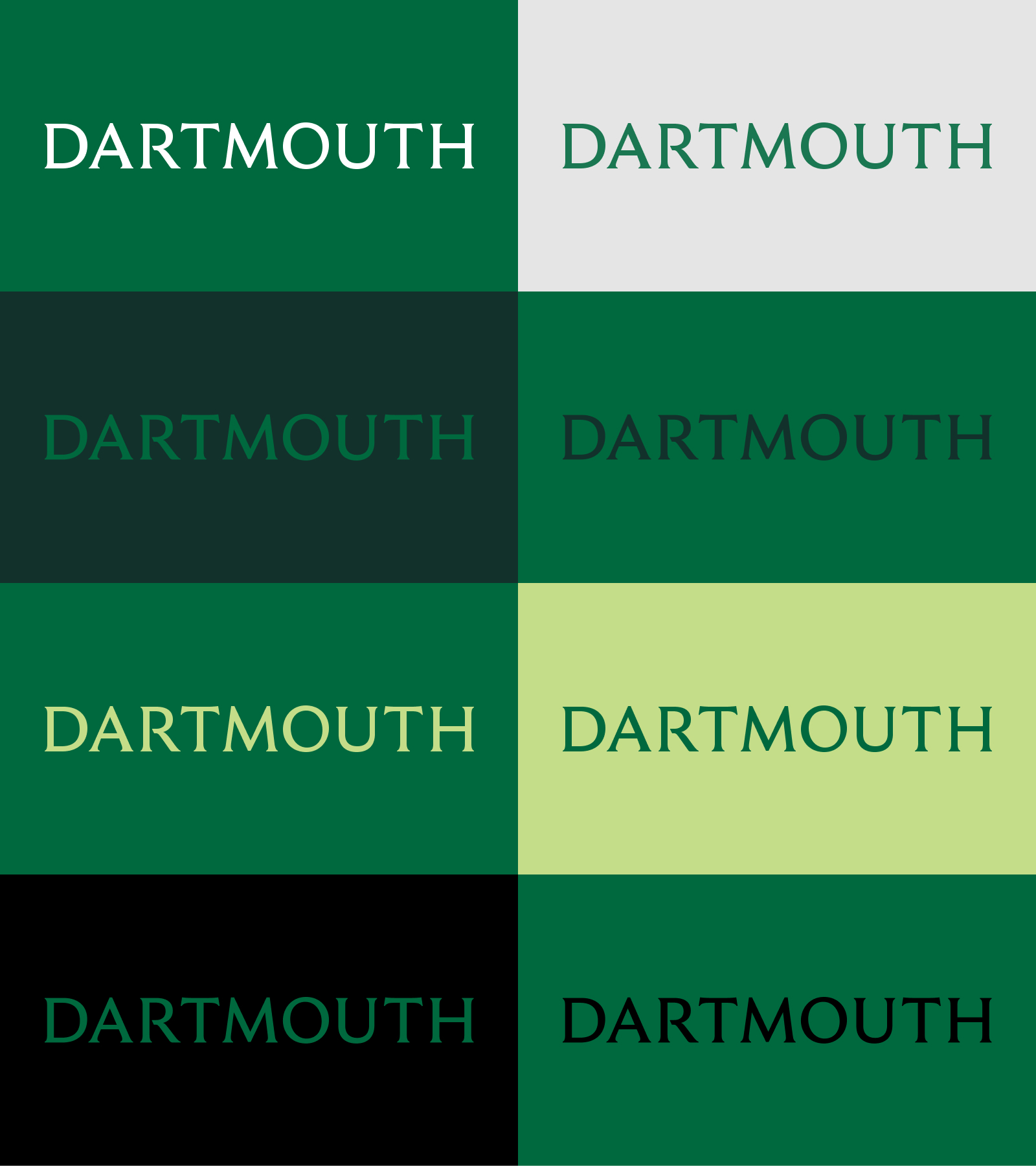Dartmouth Wordmark
The wordmark is deeply rooted in Dartmouth's heritage and culture, with much consideration of how it will live in a digital world.
Before starting your project or hiring a design firm, please contact us. We will work with you to understand your needs, answer your questions, and help you work within our brand guidelines.
About the Wordmark

The wordmark was created from a modernized version of a typeface designed by Rudolph Ruzicka, first shown in Studies in Type Design, published by the Dartmouth Library in 1968.
Ruzicka was a Czech-born illustrator, etcher, and book and typeface designer. His work can be seen on the Dartmouth Medal and the bicentennial seal. Ruzicka's original typeface design features inscription-style caps and distinct, tapered serifs. These carefully crafted details create a voice that is both elegant and authoritative.
Download the Wordmark
Wordmark Styling and Spacing
The wordmark should be displayed prominently and clearly to maximize its impact. It is important to both display the wordmark with a clear space around all four sides and to adhere to the recommended color combinations in order to maintain the brand consistency and integrity.
The minimum amount of clear space required around the wordmark is defined by the height of the "D."

Minimum Size
When printed, the wordmark must be at least 0.75" wide in order to be completely legible. When displayed digitally, the wordmark must be at least 100 pixels wide in order to be legible.
Recommended Color Combinations
We recommend using the wordmark in primary colors, secondary colors, and Spring Green from the tertiary palette. Unless placed on a photo, the wordmark should always be accompanied by the presence of Dartmouth Green.

In grayscale or black and white documents, the wordmark should appear knocked out or in black.
